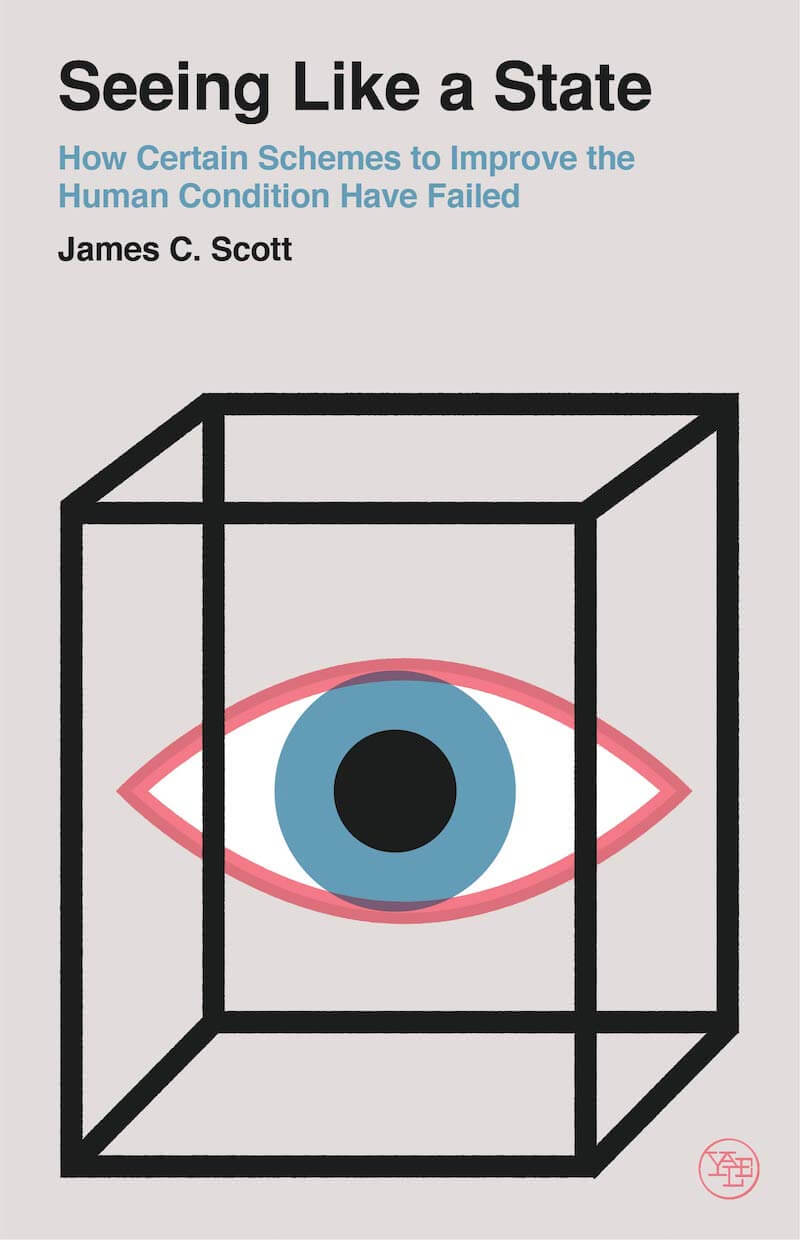Book review — Seeing Like a State, by James C. Scott
Topics: books enterprise

How Certain Schemes to Improve the Human Condition Have Failed
This is not a fun book. It’s all about how large organisations categorise and simplify the world in order to deliver particular outcomes. As the subtitle implies, the book is focused on failure modes of this Weltanschauung, but it is a balanced critique, recognising the power that is enabled by the power of those simplifying assumptions.
What I found most directly relatable is that large enterprise companies also see like states, aiming for “centralisation of command” through “imposition of legibility“. These companies are formed for a particular purpose, and specifically to deliver it at large scale — supermarket chains, not market stalls. Where the individual stall holder can afford to know their customers personally and differentiate between micro-variations in their product, the supermarket chain needs to normalise its view of its products and customers.
Such organisations also work to standardise their own environment as much as possible. A supermarket chain tries to make all of its locations as similar as possible, to make them easily navigable both in the front and the back of house. In the book, many of the examples come from James Scott’s own background in development: scientific forestry or agriculture, centrally planned cities, and so on. In all of these cases, the goal is to limit variability in order to enable centralised visibility and control.
As I read through the book, I was thinking of Isaiah Berlin’s The Hedgehog and the Fox, and sure enough, it cropped up in the text only a few pages later:
The Fox knows many things — the Hedgehog one big one.
The market stall holder is the fox, knowing all of the individual variations in their stock and their customers’ preferences. But that approach does not scale, and is anyway not relevant to goods that are more durable and less variable. Operating at the scale of a supermarket chain requires simplifying assumptions to be made.
The problem is that these simplified categories are useful, but not sufficient for all purposes. The examples from the book (forestry, agriculture) are all economical, focused on maximising short-term output — and all have failure modes once they move beyond that near horizon, requiring extensive rehabilitation of the forest, or massive use of irrigation and artificial fertilisers, which then of course have their own down-stream impacts.
In the corporate world, I see this failure mode most frequently when developing business cases for proposed projects. It’s all too common to see a goal statement like “replace email servers”. A blinkered data-driven approach would be to focus head-down on technical specs of different email options and associated costs. This is all necessary work, but a winning business case will start by asking the question of “why?” What is the actual reason for replacing the email servers? This is rarely a purely technical decision — not even if many of the actual participants would claim it to be! Moving from Exchange to sendmail or to Gmail implies a whole host of political and philosophical changes, even before getting into what the actual users of the mail service are expecting to receive from the change.

To sheep other sheep no doubt appear different
The trade-off that is always made is between the resilience of diversity, versus the maximum efficiency of homogenisation. Unfortunately it is not possible to have both; where a perfect system is imposed, a parallel shadow system grows to support it
Like the formal order of the planned section of Brasília or collectivized agriculture, modern, simplifed, and standardized agriculture depends for its existence on a “dark twin” of informal practices and experience on which it is, ultimately, parasitic.
In my world, we call this shadow IT, which is “an indictment of the IT department’s failure to engage with the business”. In other words, the high-modernism of the five-year IT plan clashes with what people need to actually do their job — and so a whole informal set of practices grows up to fill that gap.
There is also an insightful recognition in Seeing Like a State that much of the push towards standardisation is driven by “visual aesthetics”. A scientifically managed forest, with its endless straight, parallel rows of trees, all planted at the same time and therefore very similar in size and appearance, looks neater than the chaos of a truly wild wood. We see the same sort of thing in the corporate world with return-to-office policies: the visual aesthetics of a buzzing workplace match certain preconceptions of what work should look like.
Data driven — right off a cliff
The final parallel with the corporate world is the decisions that are conceived and described as being purely technical, and hence (seen as) neutral. The enterprise equivalent is being ”data driven”, without any domain-driven analysis of what the data actually represent. Much as in government, where no decisions can be entirely politically neutral, in the enterprise, data also needs to be filtered through an understanding of what it means. Being simplistically data-driven would leave a supermarket with a massive stock of unsold pumpkins in November — because it made sense to get them in to respond to the rapidly rising sales in October. A human understands that Halloween is a thing, and that pumpkin sales are going to crash afterwards.1
Ultimately I found Seeing Like a State to be a very even-handed and scrupulously fair look at a complicated topic. Failures are the consequence of taking the powerful techniques of abstraction and simplification and using them inappropriately, rather than a condemnation of the techniques themselves. The examples of failures are also evenly spread across the political spectrum. This scrupulous even-handedness and the variety fo the examples lead me to realise that the dilemma between simplifying assumptions and ultimately unmanageable fractal complexity is not specific to government, but is more related to the scale of what is to be understood and controlled. Problems arise when the simplifying assumption is used, not to aid in understanding reality, but as a goal to which reality itself should be bent.
🖼️ Book cover from image search because the one on the publisher’s website is different and much less attractive than the one on my copy; sheep photo by Kiki Falconer via Unsplash.
-
Yes yes, if you did a multi-year look-back analysis, the data would show you that Halloween-related spikes and troughs in pumpkin sales were a recurring pattern — but that’s the point, you’d have to think to ask the question. Once an event has occurred, it’s easy to find the precursor signals in the data. What is hard is picking them out from the noise beforehand. ↩